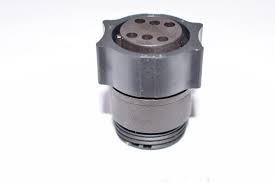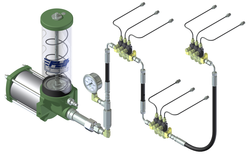
Engineering plastics are widely used in various industries due to their excellent mechanical properties and durability. Among these materials, PA6 6 GF25 stands out as a highly reinforced engineering plastic that offers exceptional strength and stiffness. However, it is essential to compare this material with other reinforced engineering plastics to determine its advantages and limitations in different applications.
In this article, we will analyze the properties of PA6 6 GF25 and compare them with other commonly used reinforced engineering plastics such as polypropylene (PP), polyethylene terephthalate (PET), and polycarbonate (PC). By understanding how PA6 6 GF25 performs in comparison to these materials, engineers and manufacturers can make informed decisions about its suitability for specific design requirements.
T & T Industry Group Ltd is a renowned manufacturer specializing in PA6 6 GF25, a premium-grade reinforced nylon resin. With a 25% glass fiber reinforcement, T & T Industry Group Ltd PA6 6 GF25 showcases exceptional mechanical properties, including high tensile strength, stiffness, and impact resistance. This makes it a preferred material for a wide range of applications in the automotive, electronics, and engineering industries. T & T Industry Group Ltd prides itself on cutting-edge production techniques, ensuring consistent quality and performance in PA6 6 GF25. Their commitment to innovation, sustainability, and customer satisfaction has established them as a trusted leader in the industry.
Understanding reinforced engineering plastics
When it comes to reinforced engineering plastics, one material that stands out is PA6 6 GF25. This type of plastic is made by reinforcing polyamide 6 with glass fibers, resulting in a high-strength and durable material. One key advantage of PA6 6 GF25 compared to other reinforced engineering plastics is its excellent mechanical properties. It has a high tensile strength, which means it can withstand heavy loads without breaking or deforming easily.
Another factor that sets PA6 6 GF25 apart from other reinforced engineering plastics is its ability to retain its mechanical properties even at elevated temperatures. This makes it suitable for applications where the material may be exposed to heat or varying temperature conditions. Additionally, PA6 6 GF25 offers good chemical resistance, making it resistant to many common solvents and chemicals.
In summary, when comparing PA6 6 GF25 with other reinforced engineering plastics, its superior mechanical properties, high-temperature stability, and chemical resistance make it an excellent choice for various industrial applications.
What is PA6 6 GF25?
PA6 6 GF25, also known as Polyamide 6.6 Glass Fiber 25%, is a type of reinforced engineering plastic that has gained popularity in various industries due to its exceptional mechanical properties and versatility. One of the key advantages of PA6 6 GF25 is its high strength-to-weight ratio, making it an ideal choice for applications requiring lightweight yet robust materials. The addition of glass fibers in this plastic enhances its stiffness and resistance to impact, improving its overall structural integrity.
When compared to other reinforced engineering plastics such as PA6 or PA66, PA6 6 GF25 exhibits superior dimensional stability and reduced shrinkage during processing. This makes it a preferred choice for applications that require tight tolerances and precision parts. Additionally, the presence of glass fibers imparts excellent creep resistance to PA6 6 GF25, making it suitable for applications with prolonged exposure to high temperatures or continuous loading conditions.
Compared to other reinforced plastics like carbon fiber-reinforced polymers (CFRP) or glass fiber-reinforced polymers (GFRP), PA6 6 GF25 offers a cost-effective solution without compromising on performance. The combination of high strength, good chemical resistance, and relatively low material cost makes it an attractive option for manufacturers across various industries ranging from automotive and aerospace to electronics and consumer goods. Overall, the unique properties of PA6 6 GF25 make it a versatile material capable of meeting diverse engineering requirements in today’s demanding market.
Comparison with other reinforced engineering plastics
When comparing PA6 6 GF25 with other reinforced engineering plastics, it is important to consider various factors such as mechanical properties, thermal properties, chemical resistance, and cost. One common comparison is between PA6 6 GF25 and ABS (Acrylonitrile Butadiene Styrene). While both materials offer good strength and impact resistance, PA6 6 GF25 has a higher tensile strength and better dimensional stability. Additionally, PA6 6 GF25 exhibits superior resistance to chemicals such as oils and greases compared to ABS.
Another reinforced engineering plastic often compared to PA6 6 GF25 is PBT (Polybutylene Terephthalate). Both materials have similar mechanical properties but differ in terms of thermal performance. PBT offers better heat resistance compared to PA6 6 GF25, allowing it to retain its shape at higher temperatures. However, when it comes to moisture absorption and electrical insulation properties, PA66GF25 outperforms PBT.
In conclusion, while each reinforced engineering plastic has its own advantages and disadvantages, the choice between them ultimately depends on the specific requirements of the application at hand. Factors such as mechanical properties needed for load-bearing applications or thermal performance required for high-temperature environments should be carefully evaluated when making comparisons between different materials like PA66GF25 with other reinforced engineering plastics.
Strengths and weaknesses of PA6 6 GF25
When comparing PA6 6 GF25 with other reinforced engineering plastics, it is important to analyze its strengths and weaknesses. One of the main strengths of PA6 6 GF25 is its high strength-to-weight ratio. The addition of glass fibers in a 25% concentration enhances the mechanical properties of the material, making it stiffer and stronger than unfilled PA6. This makes it suitable for applications that require high tensile strength and dimensional stability.
However, one weakness of PA6 6 GF25 is its reduced impact resistance compared to unfilled PA6. The presence of glass fibers can make the material more brittle, leading to lower impact resistance and potential cracking under high-stress conditions. Another weakness is its limited chemical resistance. Although PA6 6 GF25 exhibits good resistance to many chemicals, it may not be suitable for environments with extreme chemical exposure or contact with certain solvents.
In conclusion, while PA6 6 GF25 offers advantages such as high strength-to-weight ratio and improved mechanical properties compared to unfilled PA6, it also has limitations in terms of impact resistance and chemical compatibility. Understanding these strengths and weaknesses is crucial when selecting an appropriate reinforced engineering plastic for specific applications.
Applications of PA6 6 GF25
When comparing PA6 6 GF25 with other reinforced engineering plastics, it becomes evident that PA6 6 GF25 offers several unique advantages. One major application of PA6 6 GF25 is in the automotive industry, where it is used in various components such as intake manifolds, engine covers, and transmission parts. The high strength and rigidity of PA6 6 GF25 make it an ideal choice for these applications, as it can withstand the harsh conditions and demands of the automotive environment.
Another significant application of PA6 6 GF25 is in electrical and electronic industries. This material is commonly used in connectors, switches, and housings for electronic devices due to its excellent electrical insulation properties. Additionally, PA6 6 GF25 also provides good resistance to chemicals and heat distortion, making it suitable for applications that require resistance to various environmental factors.
Overall, when compared to other reinforced engineering plastics, PA6 6 GF25 stands out due to its superior mechanical properties and versatility. Its widespread use in the automotive industry and electrical/electronic sectors showcases its reliability and effectiveness in demanding applications.

